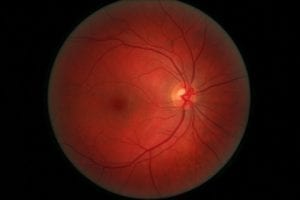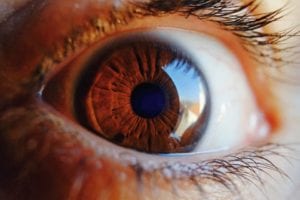Stargardt Disease
What is Stargardt disease?
Stargardt disease is an inherited disorder of the retina, the tissue in the back of the eye that senses light. The disease typically causes vision loss during childhood or adolescence, although in some cases vision loss may not be noticed until adulthood. It is rare for people with Stargardt to become completely blind; most people progressively lose vision to 20/200 or worse. (Normal vision is 20/20). Stargardt disease is also called Stargardt macular dystrophy, juvenile macular degeneration, or fundus flavimaculatus.What are the symptoms of Stargardt disease?
The most common symptom of Stargardt disease is vision loss in both of the eyes. Other related symptoms include:- Gray, black, or hazy spots in the center of vision
- Delayed adjust when moving from light to dark environments
- Sensitivity to bright light
- Color blindness
- Loss of some of peripheral vision
What causes Stargardt disease?
For those with Stargardt disease, the cones and rods die for unknown reasons. Rods help to see in dim and dark lighting while cones help to see fine visual detail and color. Mutations in a gene called ABCA4 are the most common cause of Stargardt disease. This gene makes a protein that normally clears away vitamin A byproducts inside photoreceptors. Mutations in the ABCA4 gene are also associated with other retinal dystrophies including cone dystrophy, cone-rod dystrophy, and retinitis pigmentosa.How is Stargardt disease diagnosed?
An eye care professional can make a positive diagnosis of Stargardt disease by examining the retina. Lipofuscin deposits can be seen as yellowish flecks in the macula. A standard eye chart and other tests may be used to assess symptoms of vision loss in Stargardt disease, including:- Visual field testing
- Color Testing
- Fundus photo
- Electroretinography (ERG)
- Optical coherence tomography (OCT)
What are the available treatments for Stargardt disease?
Currently, there is no treatment nor cure for Stargardt disease. Some ophthalmologists encourage people with Stargardt disease to wear dark glasses and hats when out in bright light to reduce the buildup of lipofuscin, among other standard healthy lifestyle recommendations.Where can I find out more about Stargardt disease?
Stargardt Disease Articles


NIH Gives $2.5M Grant to Rensselaer Researcher to Study Stargardt Disease
Jessica Lynn
June 8, 2023
Read More »

OCU410ST Granted Orphan Drug Designation for ABCA4-Associated Retinopathies
Jessica Lynn
May 18, 2023
Read More »

Trial Initiated to Evaluate LBS-008 for Stargardt Disease
Jessica Lynn
September 19, 2022
Read More »


New Stem Cell Robot Will Improve Care for Inherited Retinal Diseases
Kendall Mason
June 22, 2022
Read More »








